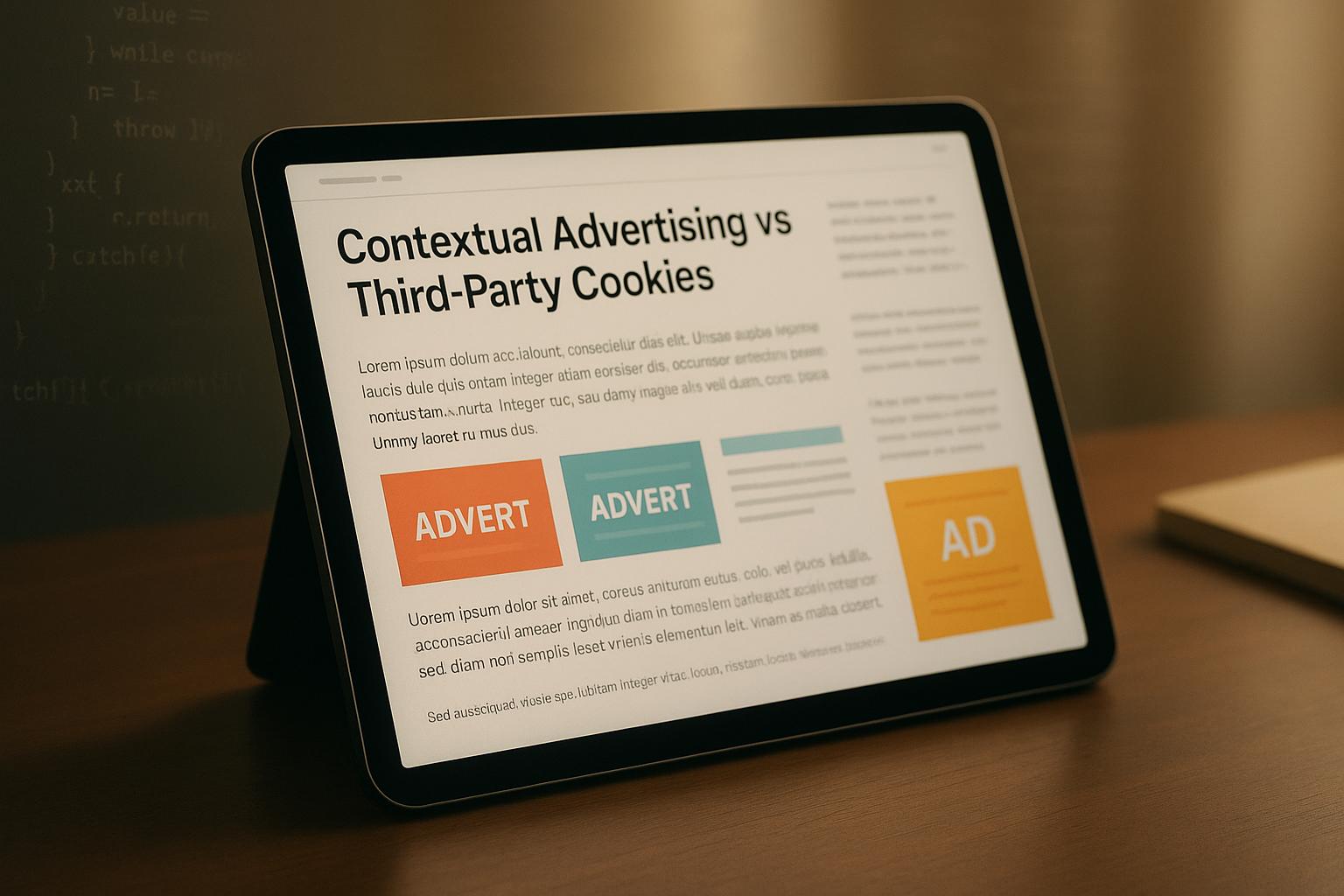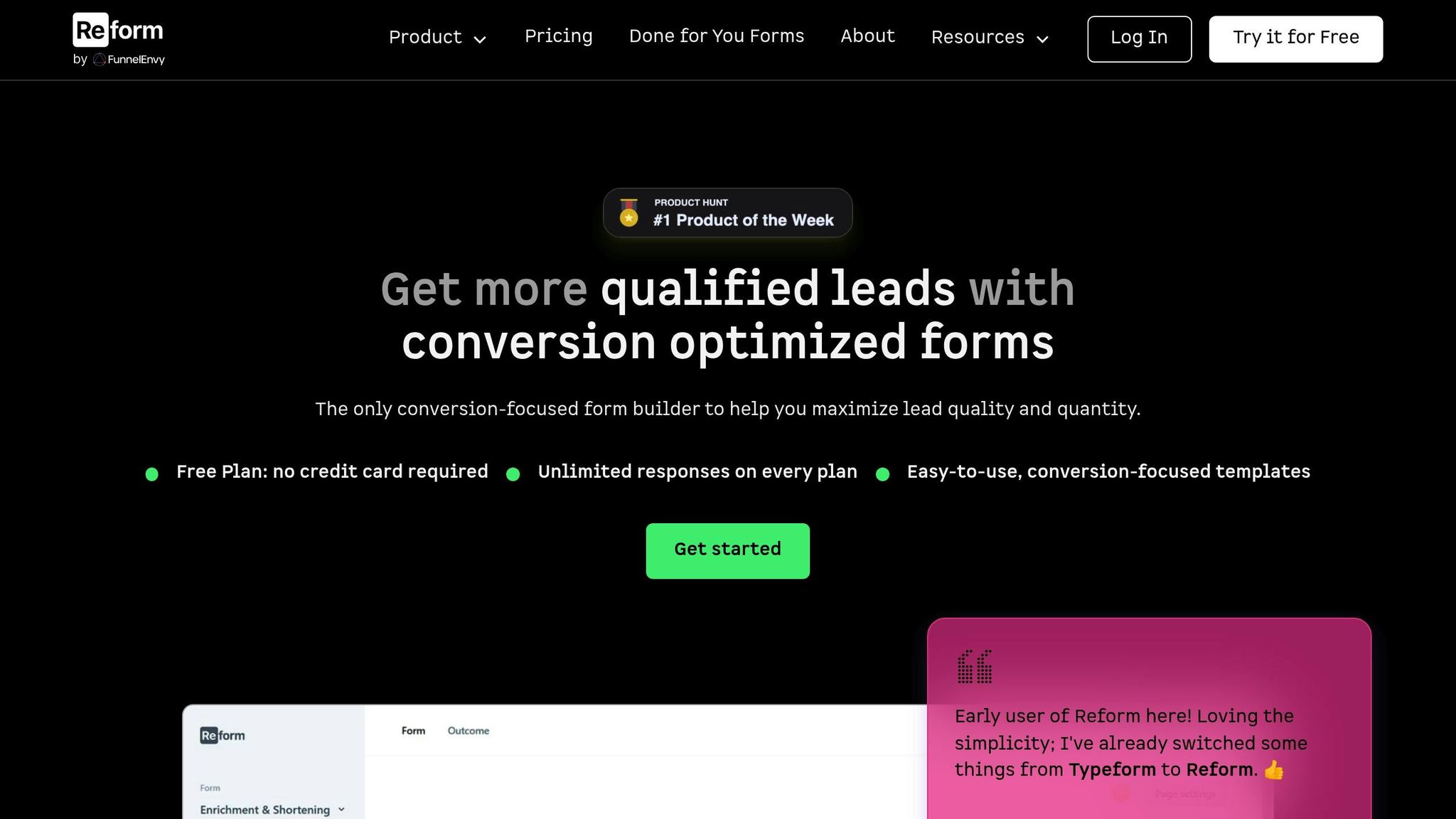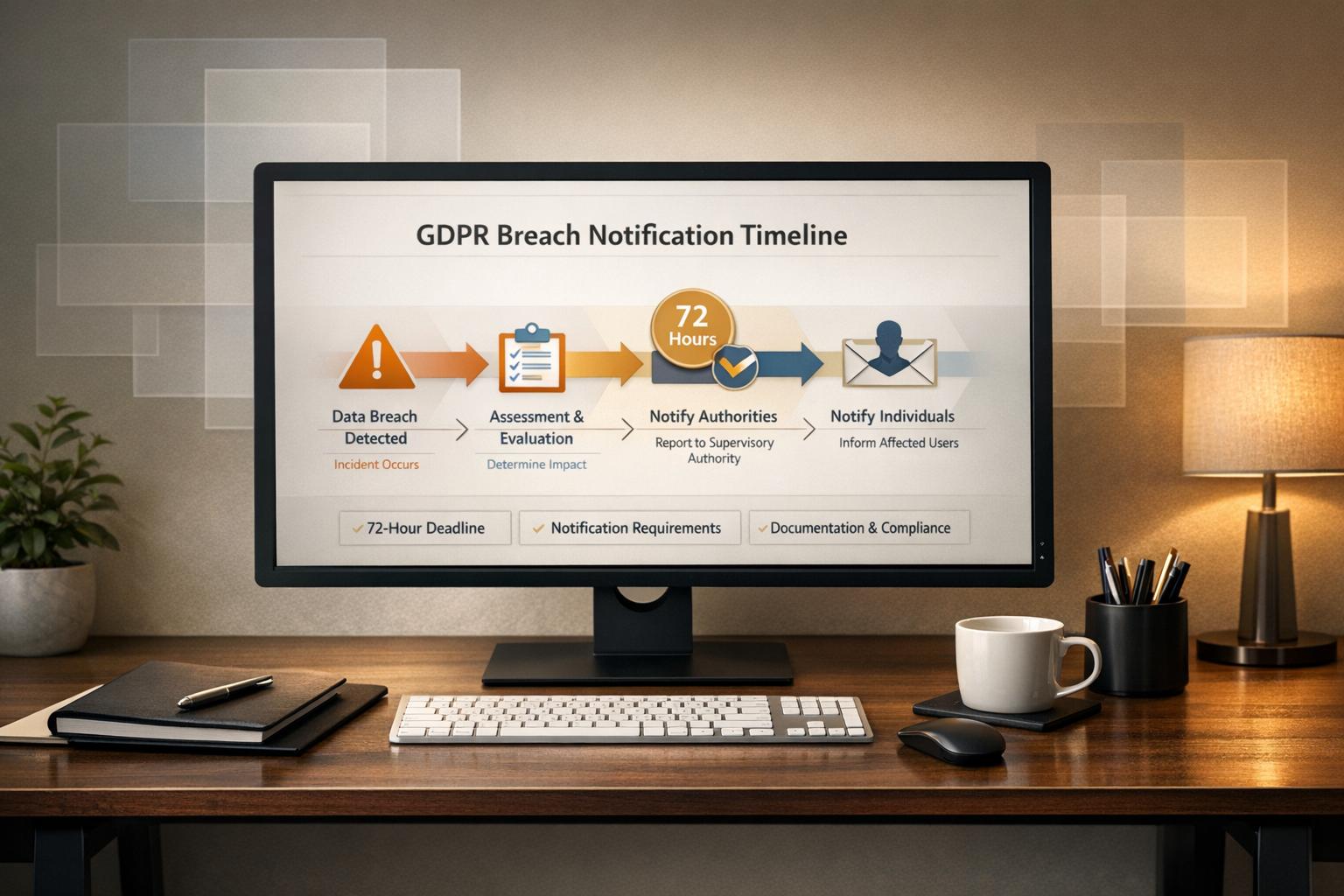Contextual Advertising vs Third-Party Cookies

Contextual advertising and third-party cookies are two very different ways to target ads online. Contextual ads focus on matching ads to the content of a webpage, while third-party cookies track users across websites to deliver behavior-based ads. With growing privacy concerns and regulations like GDPR and CCPA, businesses are shifting toward contextual methods.
Here’s why this matters:
- Privacy: Contextual ads don’t rely on personal data, avoiding the compliance challenges of third-party cookies.
- Performance: Contextual ads often deliver better engagement, with 65% of users preferring ads relevant to the content they’re viewing.
- Regulations: Third-party cookies face stricter rules, making them harder to use effectively.
Quick Comparison:
| Aspect | Third-Party Cookies | Contextual Advertising |
|---|---|---|
| Targeting | Tracks user behavior across sites | Matches ads to webpage content |
| Privacy Compliance | Requires explicit user consent | No tracking or consent needed |
| User Preference | 35% prefer behavior-based ads | 65% prefer content-relevant ads |
| Regulation Challenges | High due to GDPR/CCPA | Minimal regulatory hurdles |
As third-party cookies phase out, contextual advertising is emerging as a privacy-conscious, effective way to reach audiences. Businesses that prioritize privacy and relevance are better positioned for success in today’s digital landscape.
Can contextual targeting substitute for third-party cookies?
How Contextual Advertising and Third-Party Cookies Work
To understand why contextual advertising and third-party cookies yield different results for businesses and users, it's essential to look at how each method operates. Both approaches determine which ads to show, when to show them, and who should see them - but they go about it in very different ways.
Third-Party Cookie Tracking Methods
Think of third-party cookies as digital footprints that follow users across the internet. When you visit a website, about 60% of the cookies placed on your device are third-party cookies designed specifically for marketing and advertising purposes.
Here’s how it works: when you land on a website that includes elements from other domains - like ads, social media buttons, or analytics tools - these elements can place cookies in your browser. For example, if website A displays an ad served by website B, website B can insert a cookie in your browser using a snippet of code like <iframe src="http://websiteB.example/ad.html"></iframe>. As your browser fetches the ad, website B sends back a "Set-Cookie" header with a unique identifier. This cookie allows website B to track your activity as you visit other sites displaying its ads. Additional data, like referrer information, adds even more detail to your profile.
Here’s a real-world example: you browse a site selling sunglasses and spend time checking out aviators but don’t buy anything. Later, while reading a news article on an unrelated site, you notice ads for those same aviators - or similar sunglasses - popping up everywhere. What’s happening? A third-party cookie placed by an advertising service recognized your interest in sunglasses and used that data to serve targeted ads across various sites. This process, known as cross-site tracking, enables advertisers to engage in behavioral targeting, retargeting, and detailed user profiling. They collect your browsing history, preferences, and even demographic information to refine their advertising strategies [7, 12].
Now, let’s explore how contextual advertising takes a completely different route - one that doesn’t rely on tracking your online behavior.
Contextual Advertising Targeting Process
Unlike third-party cookies, contextual advertising zeroes in on the content of the webpage itself, rather than following users across the web. This method analyzes the page in real time, looking at keywords, phrases, images, and even the sentiment of the content to determine its subject. For example, an article about hiking gear might prompt ads for outdoor equipment, camping supplies, or athletic wear.
Here’s the key difference: contextual advertising doesn’t collect personal data or track your activity across multiple sites. Instead, it bases ad placements solely on the context of the page you’re viewing. A fitness blog might feature ads for health and wellness products, while a recipe site displays ads for kitchen gadgets.
Over time, this technology has advanced significantly. It’s no longer just about matching simple keywords - it now uses semantic analysis to understand nuances. For instance, it can distinguish between "apple pie recipes" and "Apple iPhone reviews", ensuring ads align more precisely with the page’s content. This makes the ads feel more natural and relevant, as they directly relate to what you’re reading or watching.
What’s more, contextual advertising adapts instantly to different types of content on the same site. A news website might show financial service ads on business articles, sports gear ads on athletics pages, and entertainment ads on celebrity stories - all without needing to track your browsing history. This content-driven approach contrasts sharply with cross-site tracking, setting the stage for deeper discussions about privacy and compliance.
Privacy and Compliance Differences
The shift in privacy regulations has significantly impacted digital advertising. With laws like the California Consumer Privacy Act (CCPA) and the General Data Protection Regulation (GDPR) tightening restrictions, third-party cookies are under increasing scrutiny. Meanwhile, contextual advertising has emerged as a privacy-conscious alternative that aligns better with these evolving standards. For businesses, understanding these distinctions is essential in navigating today's compliance-driven environment.
Third-Party Cookie Privacy Issues
Third-party cookies have become a compliance headache. These tools track users across various websites, collecting personal data that triggers multiple legal obligations. Under GDPR, for instance, companies must secure explicit user consent before placing third-party cookies on devices. This goes far beyond a simple "accept cookies" banner - any data that could potentially identify a user, especially when combined with other information, falls under GDPR's scope.
The penalties for non-compliance are steep. GDPR violations can result in fines up to 4% of a company’s annual global revenue, while CCPA imposes penalties of up to $7,500 per intentional violation. For example, a company earning $100 million annually could face fines as high as $4 million under GDPR. Additionally, CCPA gives consumers rights to access their personal data, request its deletion, and opt out of its sale. This requires businesses to implement clear "Do Not Sell My Personal Information" options on their websites.
Beyond meeting these legal requirements, companies must maintain detailed records of data processing, implement strong security measures, and ensure their privacy policies are transparent. Yet, fewer than 46% of businesses feel "very prepared" for a marketing world without third-party cookies. Notably, 69% of advertisers believe the phasing out of cookies will have a greater impact on their operations than GDPR or CCPA regulations.
In contrast, contextual advertising sidesteps many of these challenges by eliminating the need for cross-site tracking altogether.
Contextual Advertising Privacy Benefits
As regulatory pressures mount, contextual advertising offers a simpler, privacy-first solution. By avoiding user tracking and behavioral data collection, this approach largely eliminates the need for intricate consent systems. Instead, it focuses on analyzing the content of a webpage in real time, enabling ad targeting based solely on the context of the material being viewed.
This method reduces the complexity and expense of managing compliance systems. It also aligns well with privacy-by-design principles, as it doesn’t rely on personal data for targeting. This means businesses can largely avoid GDPR and CCPA obligations, such as deleting or exporting user profiles.
However, companies still need to maintain transparent privacy policies and handle any personal data collected through direct interactions responsibly. As consumer awareness of privacy grows and regulations become stricter, adopting a privacy-first strategy is becoming increasingly important. Already, 56% of marketers have tested cookieless alternatives. In this changing regulatory environment, contextual advertising offers a sustainable way to deliver effective ads while minimizing compliance challenges.
sbb-itb-5f36581
Lead Generation Performance Comparison
Both approaches generate quality leads, but their success depends on factors like targeting accuracy, audience engagement, and shifting digital privacy standards. By understanding how each method performs, businesses can make smarter decisions about their lead generation strategies. Let’s break down how these methods compare in driving lead quality.
Third-Party Cookie Targeting Benefits
Third-party cookies have long been a favorite for advertisers thanks to their ability to track user behavior across multiple websites. This tracking builds detailed user profiles, enabling highly specific audience segmentation. For example, if someone has been researching fitness equipment, third-party cookies can pick up on this trend and serve them ads for gym memberships or workout gear across various sites.
However, the reliability of third-party cookies is fading. With increasing browser restrictions and stricter privacy regulations, these cookies are becoming less effective, leading to data gaps and reduced targeting precision.
Contextual Advertising Performance Benefits
Contextual advertising is emerging as a strong alternative for lead generation, often outperforming traditional behavioral targeting in key metrics. For instance, contextual ads achieve a 50% higher click rate compared to behavioral ads.
One of the standout features of contextual advertising is its real-time relevance. By targeting users based on the content they are currently viewing, these ads align perfectly with the user’s immediate interests.
"With contextual, ads are targeted based on the content the audience is consuming in the present moment, ensuring they're captured in the right frame of mind to be receptive to the ads." - Samantha Allison, director at StackAdapt
This relevance resonates with consumers. Sixty-five percent of survey respondents said they are more likely to act on an ad relevant to the page they’re viewing, compared to just 35% who prefer ads based on past browsing habits. Real-world examples underline this success. In 2023, Qantas ran an airline ad on Southern Living's travel page, reaching users actively planning trips and boosting click-through rates. Similarly, Samsung strategically placed an ad for its Galaxy S25+ smartphone in a tech article about fitness trackers, appealing to readers interested in cutting-edge technology.
The engagement benefits are clear: ads placed alongside relevant content see a 16% increase in engagement. This higher engagement often leads to better-quality leads. Additionally, contextual advertising is typically more cost-effective than behavioral targeting since it doesn’t rely on extensive data collection. This allows businesses to invest more in creative assets and campaign optimization.
Market trends highlight the growing popularity of contextual methods. Currently, 60% of advertisers use contextual targeting, and 70% of publishers and media companies offer it. By the end of 2025, adoption rates are expected to soar, with 93% of brands and agencies, along with 98% of publishers, embracing contextual advertising.
"The hype around contextual advertising is warranted, the proof points are there in performance, scale and stability in a market which has been tossed and turned by changing data privacy." - Peter Wallace, Managing Director EMEA, GumGum
The numbers speak for themselves. Global spending on contextual advertising is projected to grow by 13.8% annually from 2022 to 2030, with total spending expected to surpass $250 billion by the end of this year.
For businesses prioritizing lead generation, contextual advertising offers a reliable and privacy-compliant solution. As privacy concerns push more consumers - 70%, to be exact - to opt out of user-based targeting, contextual methods provide a way to maintain effective lead generation while respecting user trust. These performance metrics highlight why the industry is moving toward privacy-first advertising strategies.
Moving to Privacy-First Advertising Methods
The advertising world is moving away from cookie-based tracking and embracing privacy-friendly approaches. This shift not only addresses regulatory requirements but also strengthens consumer trust and improves lead generation.
Industry Shift from Third-Party Cookies to Contextual Advertising
With growing privacy concerns, the advertising industry is leaning heavily on contextual strategies. Consumers are clear about their preferences - 79% favor contextual ads, while 70% oppose behavioral targeting . These numbers highlight a broader concern about data privacy, with 67% of people believing stronger government regulations are needed to protect their personal information.
The trust gap between businesses and consumers is widening. Only 40% of consumers trust brands to handle their personal data responsibly, and 63% feel companies lack transparency about how their data is used. Alarmingly, 87% of respondents say they would stop doing business with companies if they had concerns about their security practices .
Privacy-first strategies are proving to be both ethical and effective. For example, Amazon DSP's AI-powered contextual targeting helped Blueair achieve a 2.4x higher detail page view rate, a 42% drop in CPMs, and a 34% increase in new-to-brand customers. PepsiCo saw similar success during Prime Day 2024, achieving a 3x higher return on ad spend, cutting cost per acquisition by 62%, and lowering CPMs by 60%, all while expanding their unique reach. Contextual ads also increased brand awareness by 93%, with ad relevance boosting memorability by up to 40%.
"In today's privacy-first world, contextual advertising isn't just compliant. It's a smarter, more cost-efficient way to drive engagement, boost recall, and build trust with your audience." - Rachel Glazier, Director of Product GTM, InformaTech Target
AI advancements are making contextual advertising even smarter by enabling faster and more accurate content analysis. Companies leveraging AI in their marketing efforts are seeing revenue growth of 3% to 15% and a sales ROI increase of 10% to 20%. The global Consent Management Platform (CMP) market reflects this trend, growing from $0.99 billion in 2024 to a projected $4.75 billion by 2033, with a CAGR of 18.7%. By 2025, 85% of the global population will have their personal data protected under modern privacy laws.
This shift paves the way for tools like Reform to help businesses optimize their lead generation strategies.
Using Reform for Better Lead Generation

Reform is designed to align perfectly with the privacy-first movement, offering businesses a seamless way to gather first-party data. Its no-code form builder allows companies to turn clicks on contextual ads into quality leads using multi-step forms and conditional routing.
The platform focuses on collecting first-party data directly from prospects, giving businesses a complete view of their audience. With real-time analytics, businesses can monitor form performance, conversion rates, and user behaviors - key metrics for refining contextual ad campaigns. Features like built-in spam prevention and email validation ensure the leads collected are authentic, while integrations with marketing and CRM systems make it easier to adopt first-party data strategies.
Reform also includes tools like abandoned submission tracking and A/B testing to continuously improve lead capture forms. Custom thank-you pages and conditional routing create personalized experiences that validate the exchange of information, fostering the trust that's essential in a privacy-first world.
"My advice is clear: don't wait for the next law or the next crisis to force your hand. Be proactive. Audit your practices now, double down on first-party data and content, educate your team, and pivot your tactics to those that align with privacy principles." - Nate Gouldsbrough, Intellibright's Senior Digital Strategist
Choosing the Right Approach for Your Business
When it comes to navigating privacy-first strategies, the decision between contextual advertising and third-party cookies hinges on understanding their core differences and how they align with the evolving digital landscape. Third-party cookies rely on tracking user behavior across multiple websites to deliver personalized ads. In contrast, contextual advertising focuses on the content of the webpage a user is currently visiting to determine ad placement. These approaches differ significantly in terms of privacy compliance and effectiveness in lead generation.
| Aspect | Third-Party Cookies | Contextual Advertising |
|---|---|---|
| Targeting Method | Tracks user behavior across websites | Ads based on webpage content |
| Privacy Impact | Requires explicit consent (GDPR/CCPA) | No user consent needed |
| Data Collection | Browsing habits, preferences, personal data | Keywords, metadata, page themes |
Privacy concerns are front and center in this debate. Third-party cookies often raise red flags due to their reliance on cross-site tracking, which demands explicit user consent under regulations like GDPR and CCPA. On the other hand, contextual advertising offers a more privacy-conscious alternative by eliminating the need for user profiling or tracking. With opt-in rates for tracking plummeting to around 35% - a sharp drop from nearly 90% before 2020 - it’s clear that user preferences are shifting toward less intrusive methods.
"Contextual targeting doesn't follow people; it follows meaning - unlike behavioral targeting, which relies on tracking users across sites. And that's exactly what regulators, browsers, and audiences are aligned on today: relevance without intrusion." - AdMozart
Interestingly, 69% of advertisers believe that the deprecation of cookies will have a greater impact on their business than privacy laws themselves. This highlights how the technical move away from cookies is reshaping the advertising world even more than regulatory changes.
For businesses, the path forward involves building strong systems for first-party data collection. Tools like Reform’s no-code form builder are instrumental in this shift. Reform enables businesses to capture high-quality leads from contextual ad traffic using features like multi-step forms, conditional routing, and real-time analytics - all without resorting to invasive tracking methods.
By choosing contextual advertising, businesses can foster trust-based relationships with their audiences. This method leverages keywords, metadata, and page themes to place ads in a way that respects privacy while driving results. Combined with tools like Reform, companies can create a complete marketing strategy that aligns with modern privacy expectations and delivers measurable outcomes.
The evidence is clear: contextual advertising is paving the way for the future of digital marketing. Businesses that embrace this approach today will be better prepared to thrive in an era where privacy and trust are paramount.
FAQs
How does contextual advertising compare to third-party cookies in terms of privacy compliance with regulations like GDPR and CCPA?
Contextual advertising tends to align better with privacy regulations like GDPR and CCPA compared to third-party cookies. Unlike third-party cookies, which monitor user behavior and require explicit consent, contextual ads focus on the content of a webpage to display relevant ads. This eliminates the need for intrusive tracking and naturally complies with privacy-focused laws.
Both GDPR and CCPA emphasize giving users control over their personal information. GDPR mandates clear consent for tracking technologies like cookies, while CCPA allows consumers to opt out of the sale of their personal data. Because contextual advertising doesn’t depend on personal data, it sidesteps many of the compliance hurdles that third-party cookies face, making it a more privacy-conscious advertising approach.
What advantages can businesses gain by switching from third-party cookies to contextual advertising?
Switching to contextual advertising brings several advantages for businesses. Instead of relying on third-party cookies to track individual user behavior, this method targets ads based on the content of a webpage. This shift not only supports privacy compliance but also aligns with stricter privacy laws, helping companies maintain trust and safeguard their brand reputation.
Another perk? Contextual advertising boosts ad relevance and engagement by aligning ads with the content users are already consuming. This often results in better conversion rates and more meaningful interactions with potential customers. Plus, it’s often a cost-efficient option since it focuses ad spend on reaching the right audience at the right moment - without the need for intrusive tracking.
For businesses aiming to capture high-quality leads, tools like Reform can amplify these benefits. By integrating smoothly with marketing and CRM platforms, it streamlines lead capture and helps improve conversion rates.
What are the best strategies for using contextual advertising to generate high-quality leads?
To get the most out of contextual advertising for lead generation, businesses need to focus on aligning their ads with content that truly resonates with their audience. Start by pinpointing the key topics and categories your target customers are most interested in. Then, strategically place your ads on platforms or websites that naturally align with this content, ensuring they feel relevant and engaging.
Make use of tools that integrate directly with your CRM or analytics systems. These can help you track ad performance and fine-tune your targeting for better results. Unlike third-party cookies, contextual advertising zeroes in on the content being viewed rather than personal data. This approach not only respects user privacy but also helps build trust while effectively connecting with potential customers.
Related posts
Get new content delivered straight to your inbox

The Response
Updates on the Reform platform, insights on optimizing conversion rates, and tips to craft forms that convert.
Drive real results with form optimizations
Tested across hundreds of experiments, our strategies deliver a 215% lift in qualified leads for B2B and SaaS companies.


.webp)



